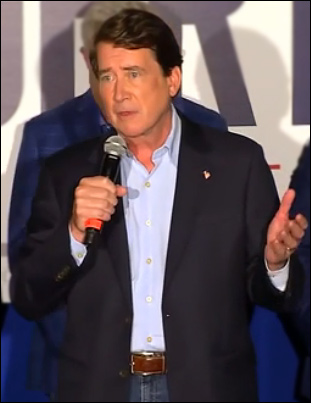By Jim Ellis

Controversial Rep. Ilhan Omar (D-Minneapolis) faces a primary challenge today by attorney Antone Melton-Meaux (D).
CONNECTICUT
With no Senate or governor’s race on the ballot this year, votes are being cast to select the general election candidates in the Nutmeg State’s five congressional districts. Reps. John Larson (D-Hartford), Joe Courtney (D-Vernon), Rosa DeLauro (D-New Haven), and Jim Himes (D-Cos Cob) look safe for re-election as they have each won multiple terms.
Freshman Rep. Jahana Hayes (D-Wolcott) in the 5th District is also a heavy favorite for re-election but retired federal prosecutor David X. Sullivan (R) is a credible candidate in a district that could elect a Republican under the right circumstances. This year, however, doesn’t appear to yield such a positive atmosphere for the GOP. Sullivan has raised over $230,000, but that won’t be near enough to run a strong campaign against Rep. Hayes. The first-term congresswoman is the top fundraiser in Connecticut with $1.33 million in receipts through June 30.
MINNESOTA
Former representative Jason Lewis (R) is vying for the opportunity of challenging first-term Sen. Tina Smith (D) and is a likely winner tonight over four lightly regarded Republican opponents. Lewis will be a clear underdog against Sen. Smith, who won a 2018 special election with a 53-42 percent victory over what looked to be a strong challenge from GOP state Sen. Karin Housley. A recent Public Policy Polling survey (July 22-23; 1,218 Minnesota voters) found Sen. Smith leading Lewis, 48-39 percent.
The 1st District congressional race looks to be another hard-fought political battle. Here, we see a re-match between freshman Rep. Jim Hagedorn (R-Blue Earth/Rochester) and former Defense Department official Dan Feehan (D). In 2018, this contest was decided by a scant 50.1 – 49.7 percent percentage spread, a margin of just 1,315 votes.
Feehan leads the money chase with $2.3 million raised to the congressman’s $1.66 million through the July 22 pre-primary campaign finance disclosure deadline. Both will easily win re-nomination tonight, but a close finish here is a virtual certainty.
The race that will attract the most attention lies in the Minneapolis-anchored 5th District where the challenger to controversial Rep. Ilhan Omar (D-Minneapolis), attorney Antone Melton-Meaux (D), has raised almost as much money as the incumbent, $4.15 million to $4.28 million, and both had less than $1 million remaining in their accounts at the July 22 reporting deadline.
It is unlikely that Melton-Meaux will deny Rep. Omar re-nomination, but his percentage will be interesting to watch. His main mode of attack, while positioning himself clearly on the ideological left, underscores that Rep. Omar is much more interested in developing a national platform than she is in representing the local district.




